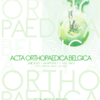Radial head fractures: a quantitative analysis
radial head fracture; 3D CT reconstruction; forearm rotation; quantitative analysis; Mason classification; size fracture
Published online: Aug 23 2022
Abstract
Several classification systems for radial head fractures discuss the number of fragments and their displacement, but not the exact location. This study aimed to evaluate the location of the radial head fracture fragments and the influence of the Mason type on the size of the fracture fragment. Forty-one radial head fractures (31 Mason type I and 10 type II) with an elliptical radial head were included in this retrospective study and 3D reconstructed. First, the fragments were repositioned to their original location. Next, the orientation of the scanned forearm was evaluated using the position of the longest axis relative to the proximal radio-ulnar joint, and all radial heads were rotated to the neutral rotation. The radial head was divided into 4 quadrants (anteromedial, anterolateral, posteromedial, and posterolateral). The location of the fracture line in correlation with these 4 quadrants was evaluated. All fracture fragments were located in the anteromedial quadrant. Thirty-eight (93%) were located in the anterolateral quadrant. The posterolateral quadrant was involved in 32%. At last, the average fracture fragment size was evaluated according to the Mason classification. A significant difference was found in the average fracture fragment size between Mason type I (38% of the radial head surface) and type II (48% of the radial head surface). It was concluded that there is an important involvement of the anterior quadrants of the fracture. The mean size of the fracture is significantly larger in Mason type II compared to type I.
